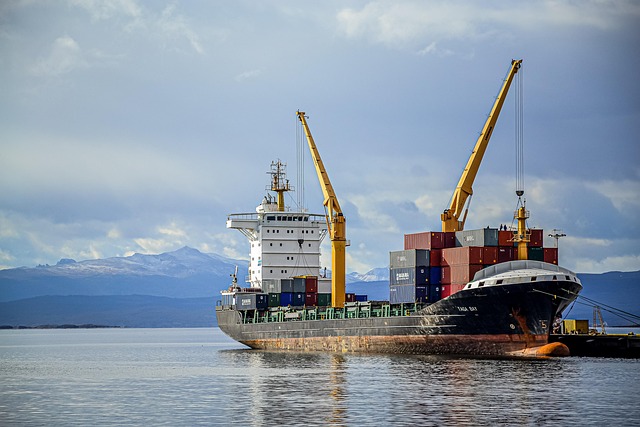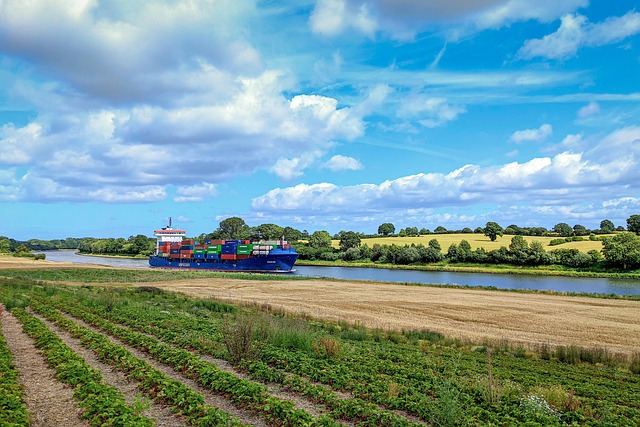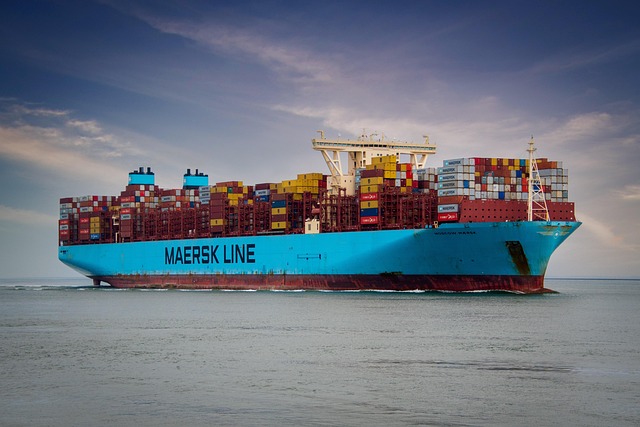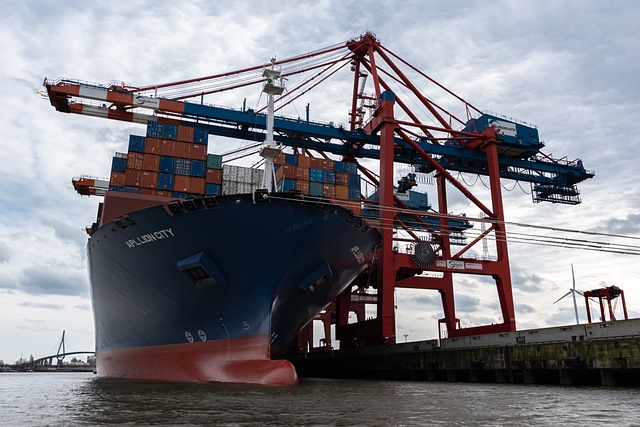Heavy-load shipping containers are designed to transport oversized and unusual cargo using robust materials and reinforced designs across various transportation modes. They offer types like flat rack, open top, high cube, and refrigerated containers for specific freight needs. Using these containers is cost-effective and efficient compared to traditional land or air freight, ideal for delicate machinery, construction equipment, and specialized cargo. Choosing the right container based on dimensions, capacity, and equipment requirements ensures optimal utilization, secure handling, and cost savings through leasing or rental. Best practices include accurate cargo assessment, coordinated loading with specialized equipment, secure fastening, even weight distribution, pre-transport inspections, and adherence to ISO regulations for safe global transport.
In today’s globalized world, transporting oversized equipment across continents is a significant challenge. Heavy load shipping containers emerge as a game-changer, revolutionizing the logistics industry. This article delves into the intricacies of these specialized containers, highlighting their advantages and best practices for safe transportation. From understanding container types to choosing the right size and efficient loading techniques, we explore why heavy load shipping containers are an indispensable tool for navigating global supply chains.
- Understanding Heavy Load Shipping Containers
- Advantages for Oversized Equipment Transport
- Choosing the Right Container Size and Type
- Best Practices for Safe and Efficient Loading
Understanding Heavy Load Shipping Containers

Heavy load shipping containers are specialized cargo carriers designed to transport oversized or unusual items that exceed standard container dimensions. These robust structures are engineered to withstand extreme weights and offer a versatile solution for moving equipment, machinery, and other bulky freight. By utilizing heavy-duty materials and reinforced designs, these containers ensure the safe and secure movement of valuable cargo across various transportation modes, including sea, rail, and road.
Understanding the specific requirements of oversized cargo, shipping companies have developed these containers to accommodate unique shapes and sizes while maintaining structural integrity. They come in various types, such as flat rack, open top, high cube, and refrigerated containers, each tailored to different freight needs. This modularity allows for efficient container leasing or rental services, providing businesses with flexible options for their transport requirements.
Advantages for Oversized Equipment Transport

Using heavy load shipping containers for oversized equipment transport offers several significant advantages. Firstly, these specialized containers provide an efficient and cost-effective solution for moving large, bulky items that traditional land or air freight methods might struggle with. By utilizing a single, robust shipping container, companies can simplify the logistics chain, reducing handling and potential damage during transit. This is particularly beneficial for delicate machinery, construction equipment, and other specialized cargo that requires secure and safe transportation.
Additionally, the modular design of these containers allows for flexibility in terms of dimensions and capacity to accommodate a wide range of oversized items. Whether it’s a massive manufacturing machine or a customized piece of construction gear, shipping containers can be adapted to ensure a snug fit, minimizing shifting during transport. This not only enhances safety but also prevents costly delays caused by loading and unloading issues at various stages of the journey, especially with intermodal container shipping.
Choosing the Right Container Size and Type

When transporting oversized or heavy equipment, selecting the appropriate shipping container is paramount to a successful and safe journey. The right container size and type play a pivotal role in ensuring efficient cargo securement, minimizing damage, and adhering to legal regulations. Key considerations include understanding the dimensions and capacity of your freight, as well as the specific requirements of the equipment.
For instance, standard ISO containers come in various sizes like 20-foot or 40-foot, each with different weight and load capabilities. Specialized containers such as high cube, refrigerated, flat rack, open top, or modular options are also available for unique cargo needs. Choosing the right container type allows for optimal utilization of space, secure handling during transport (via ship, rail, or road), and cost-effectiveness through efficient container leasing or rental from a trusted container depot.
Best Practices for Safe and Efficient Loading

When loading heavy and oversized equipment into shipping containers, adherence to best practices is paramount for safe and efficient transport. Firstly, ensure proper planning and preparation by assessing the dimensions and weight of the cargo accurately. This step is crucial in selecting the appropriate container type – whether it’s a flat rack container for extra-long items or a high cube container for optimal vertical space utilization.
The loading process itself demands careful coordination. Use specialized equipment like heavy-duty cranes and forklifts to minimize manual labor and reduce the risk of accidents. Secure the cargo properly using strapping, chains, or specialized fasteners tailored to its shape and size. Distribute the weight evenly across the container floor, utilizing all available space efficiently while maintaining stability. Verify the loading configuration against industry standards and container specifications, especially for ISO containers widely used in global shipping. Regularly inspect the loaded container for any signs of damage or misalignment before sealing it for transport, ensuring compliance with freight container regulations and enhancing cargo safety during container shipping and container transport.
Heavy load shipping containers have revolutionized oversized equipment transport, offering numerous advantages such as cost-effectiveness, flexibility, and speed. By understanding the various container types, selecting the right size, and adhering to best loading practices, businesses can ensure efficient and safe movement of their largest assets. Shipping containers continue to be a game-changer in logistics, enabling seamless transportation for even the bulkiest of equipment.
